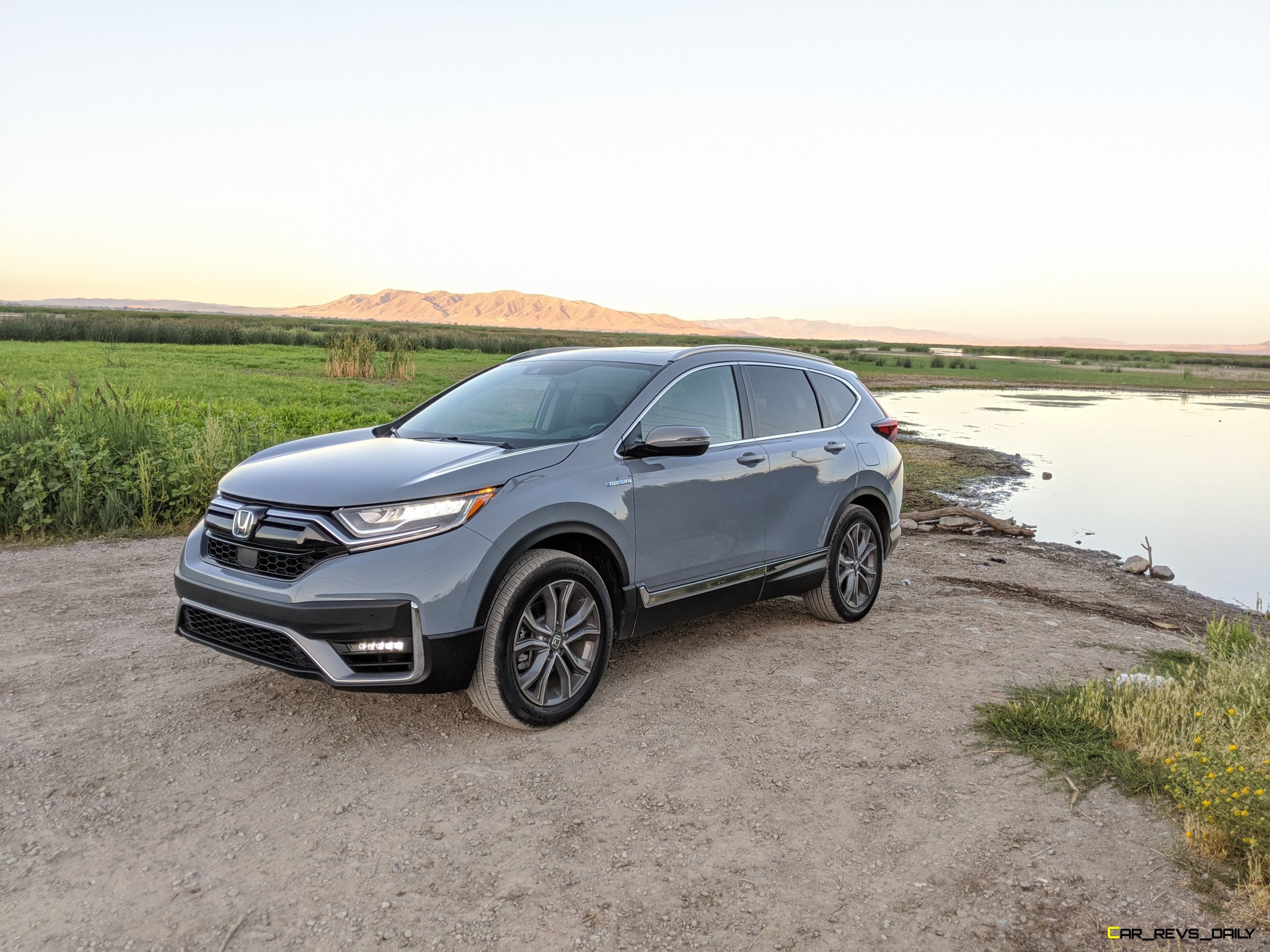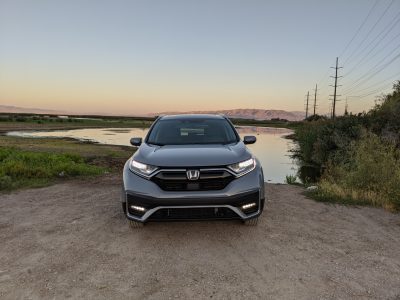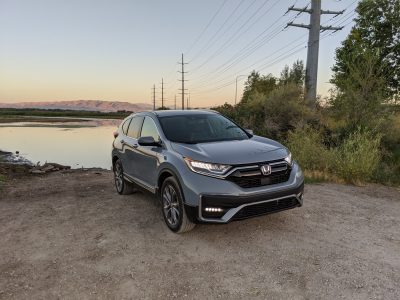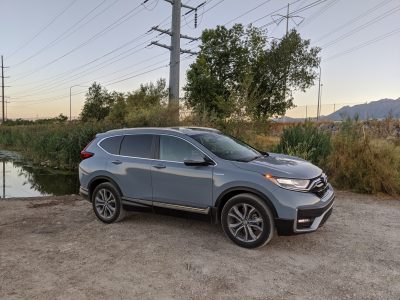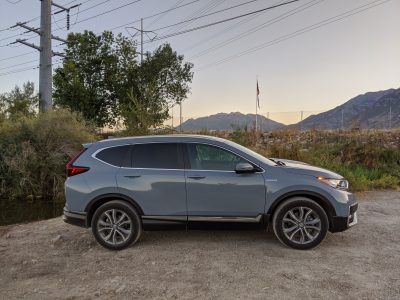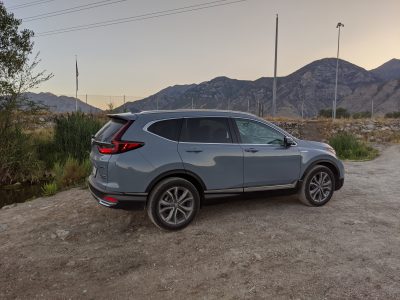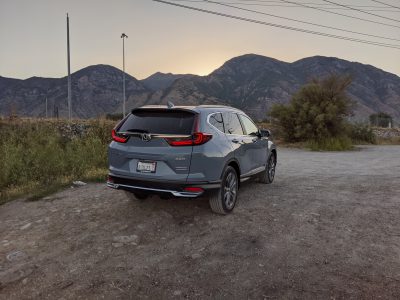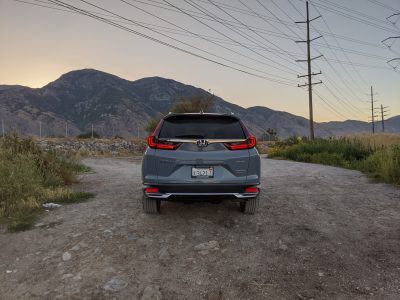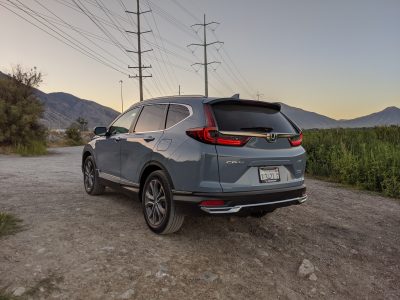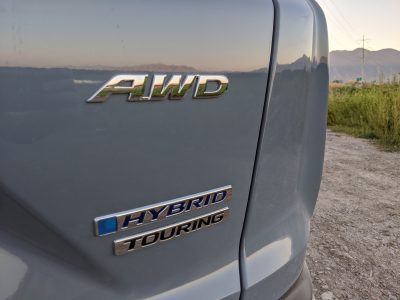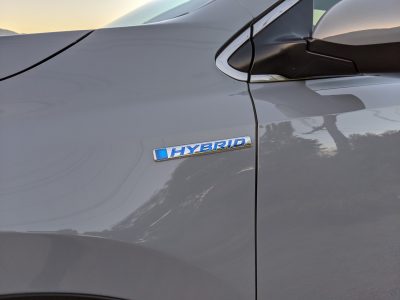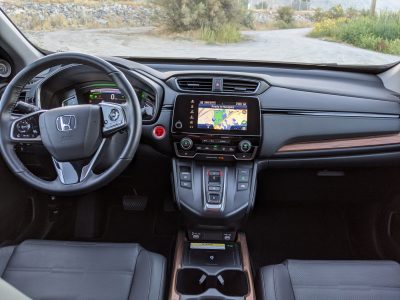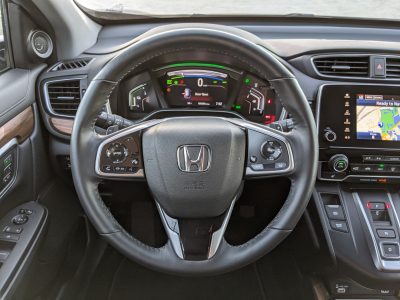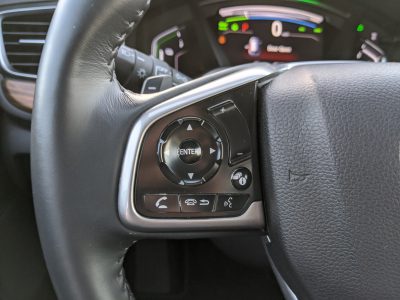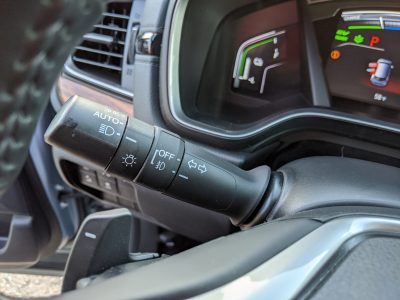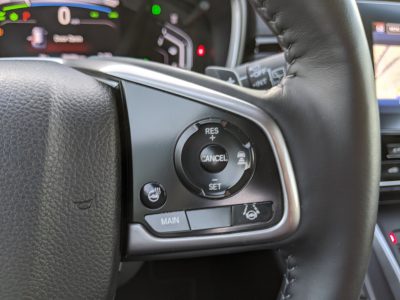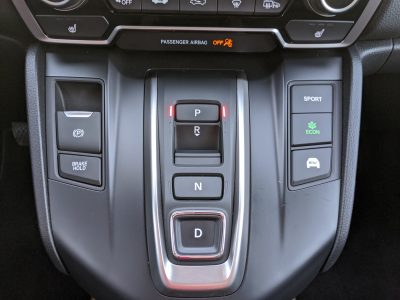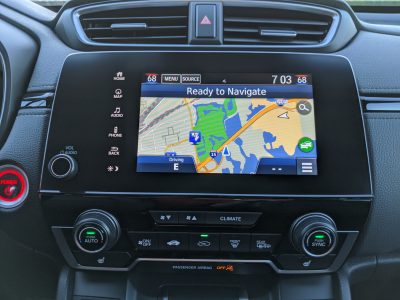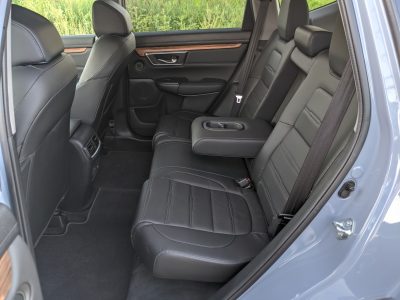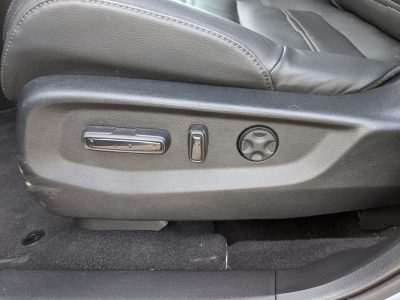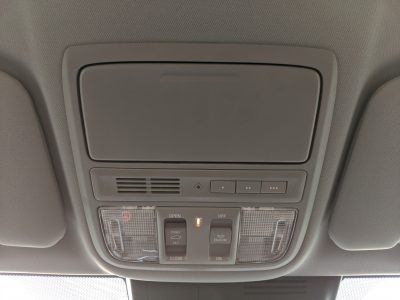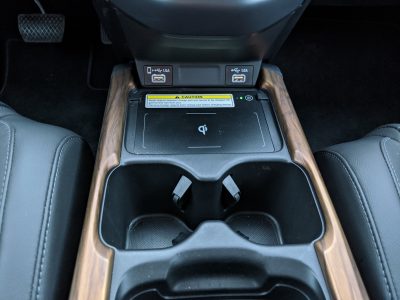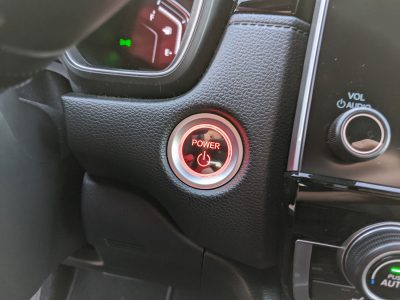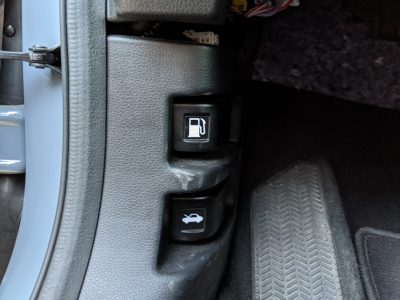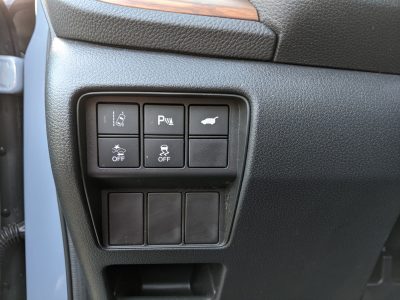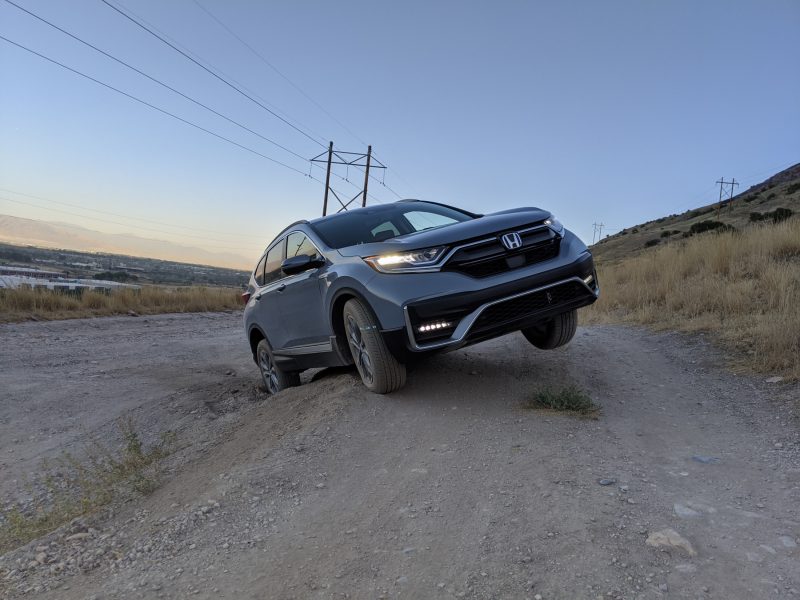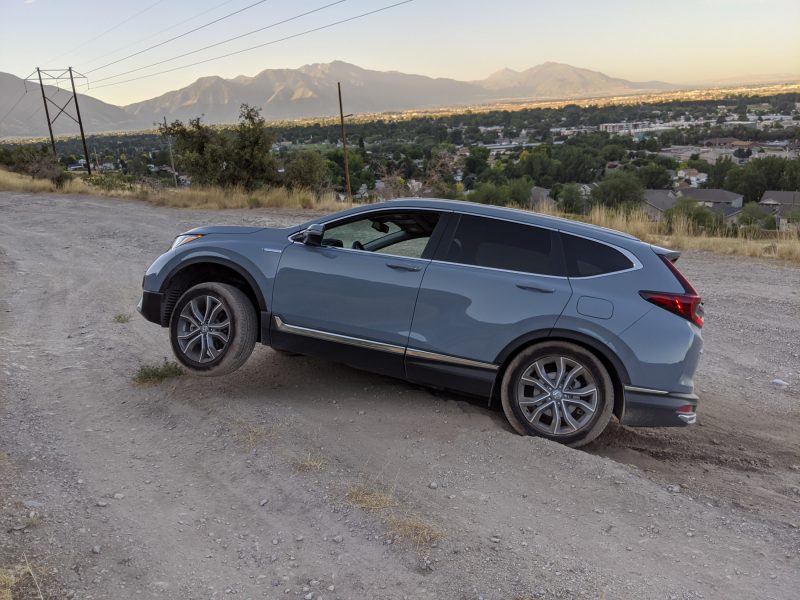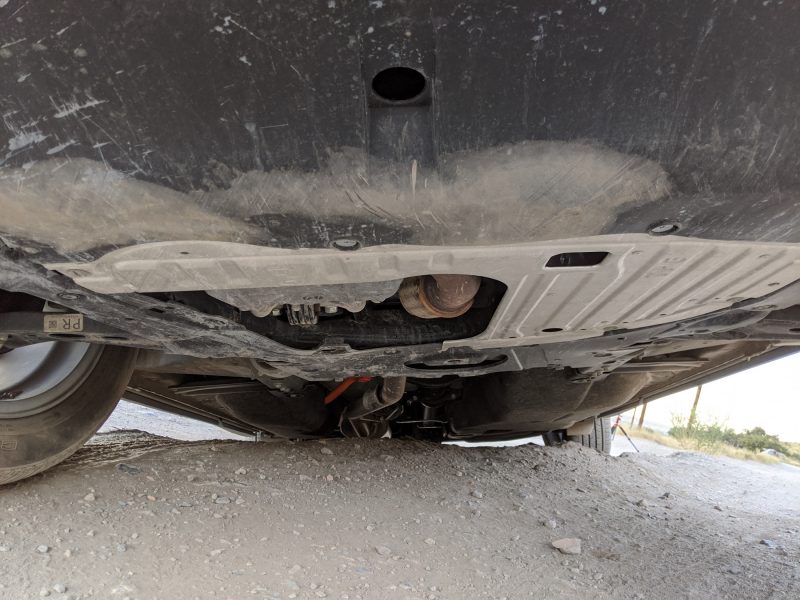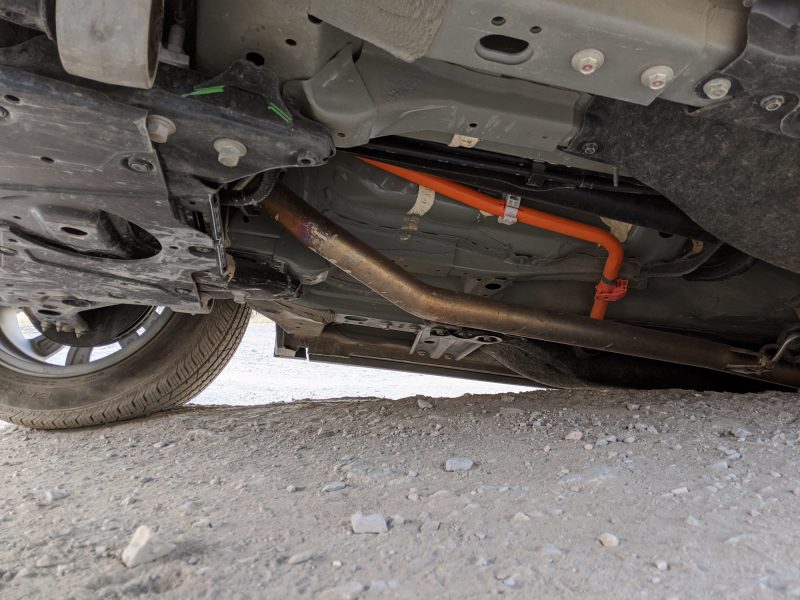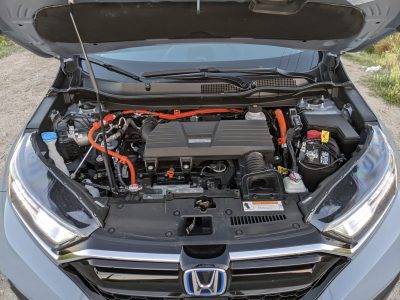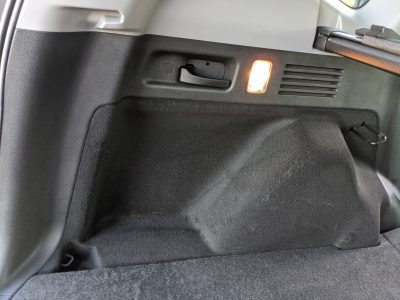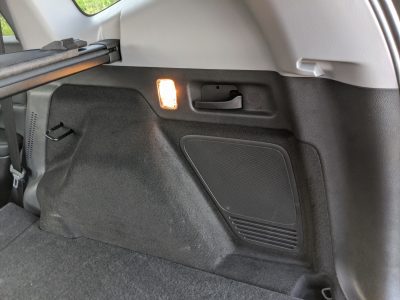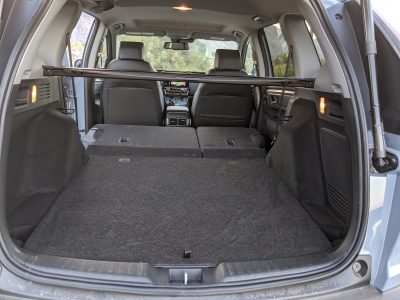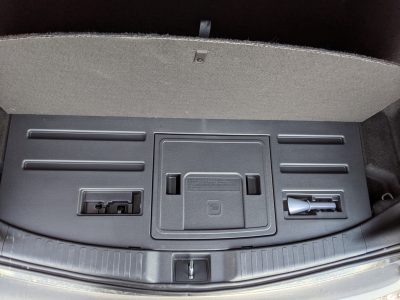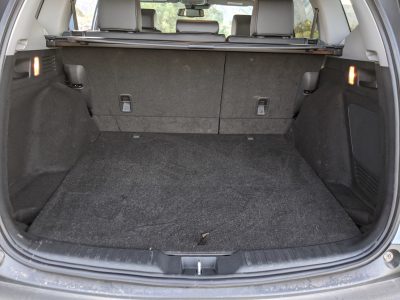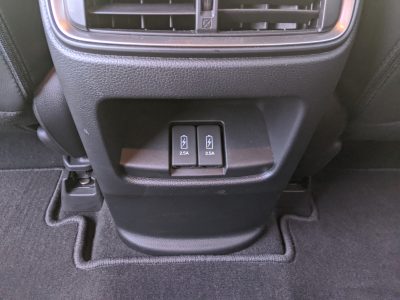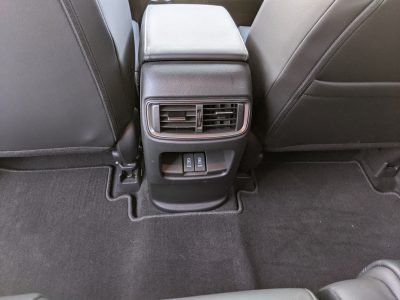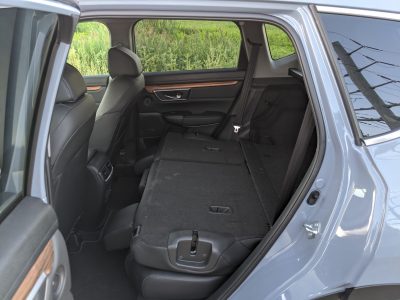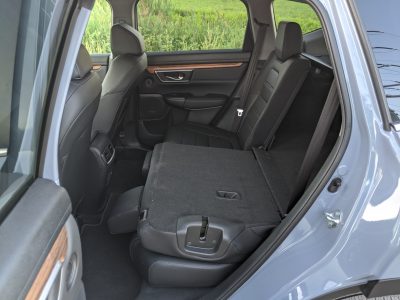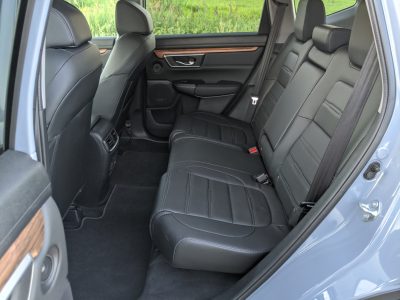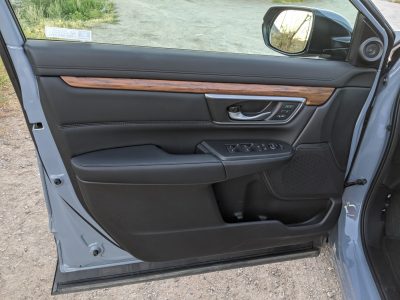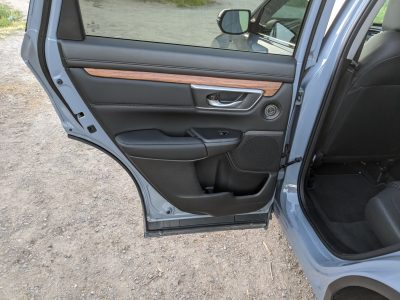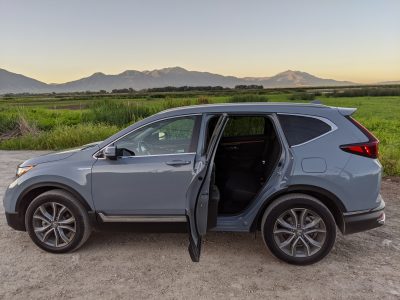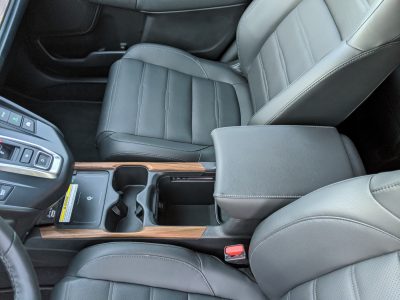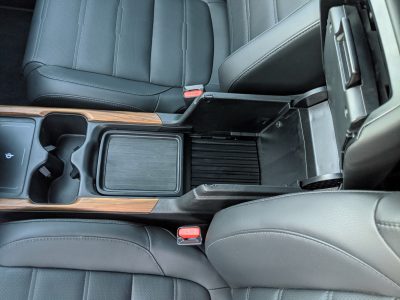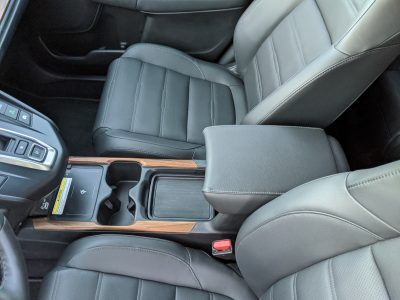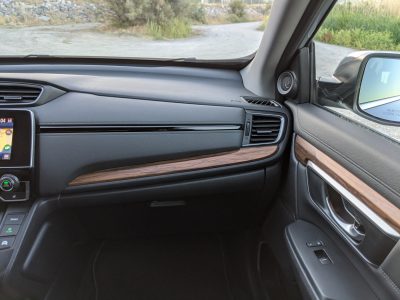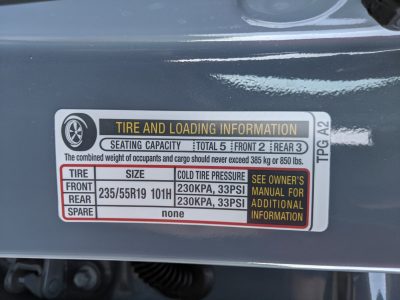Honda’s number one selling vehicle in the United States is the CR-V. As such, Honda engineers and designers are going to do their best to keep this vehicle a major competitor in its class. For 2020, there has been a minor refresh to the front end and the center console. The one major change for 2020 is the introduction of a hybrid model for the first time in the CR-V’s history.
Exterior
On the outside, the CR-V has design cues that are similar to the Civic. The hexagonal-shaped grill houses the Honda emblem and some swooping chrome trim that underscores the LED headlights. The lower grill has LED strip fog lights near the edges that are different from the round-style fog lights on Honda’s other crossovers.
Looking from the side, the front bumper protrudes like the jawline of a salmon heading to spawn. From there it continues with modern sharp lines, rather than the curved lines that were prevalent a decade ago. The side windows form a shape similar to many other crossovers with the A and B pillars being black and chrome trim lining the outside edges. On the lower sides, there is black cladding with chrome trim that slims as it gets to the rear quarter panel. The 19-inch split five-spoke wheels are attractive and not oversized like many options available today.
Moving to the rear, the taillights immediately catch the eye. They start about midway up the hatch and go all the way up the edges to the top of the rear glass. There is a clear crease in the liftgate with a slight U shape that breaks up the rear nicely. Adorning the rear hatch are four badges and one Honda emblem. This was a few too many for our tastes. The rear bumper is black with chrome trim on the bottom and rectangular reflectors at the edges.
Interior
The interior of the CR-V Touring is very nicely equipped. Being the top trim level, most of the features are standard. One thing that is common across Honda vehicles but different from other manufacturers is the push button transmission. Thankfully, the buttons and lever for reverse are clear and different from the other buttons on the dash.
The infotainment system has been updated from the early knob-free versions to having one knob controlling the volume. It would still be nice to have a second knob to tune the radio with, but at least it isn’t all touch screen.
Up front there are plenty of charging solutions. A wireless charger sits at the front of the center console with two USB charging ports directly above that. Inside, the center arm rest is on 12-volt outlet. For the rear seat, there are two 2.5-amp USB charging ports in the back of the front center console.
The rear seats are comfortable for two adults. The center seat doubles as an arm rest that folds down with two cupholders. Car seats fit just fine but expect forward facing children to be kicking the front seats as there isn’t a ton of space there.
Cargo capacity is quite good, as vehicles seem to be getting larger with each iteration. The previous generation CR-V had about eight cubic feet less space than the current generation. Most of that additional space is for the rear seat passengers, but doubles as cargo space when the seats are folded down. One interesting thing in the cargo area is the flat repair pump. Being a hybrid, there isn’t as much space under the rear load floor for a spare tire, so an air pump with a tire sealer is stored there instead. What makes it interesting is that the pump is placed very low below the cargo area, but the cover to get to it is of a shape that prevents anything else from being stored in the deep pocket.
Driving
We know that we’ve said this before, but hybrid powertrains have come a long way, and the CR-V is like so many others. The braking system so smoothly transitions between regeneration and the friction brakes that its imperceptible. Along that same thread the transition between the electric and gas engine is nearly as smooth. There were only a couple of times in our week with the CR-V that we noticed the transition.
Fuel mileage is good at 40 mpg city, 35 mpg highway, and 38 mpg combined. We averaged just over 35 mpg, but that included some time off-highway and idling for photos and video.
There are three drive modes: Normal, EV and Sport. Normal mode is what would be used for most driving situations, it uses a good mix of the gas and electric motors and results in the best driving characteristics. EV mode only uses the electric motor to drive the wheels and with a small battery pack this is very limited in use. To see how the EV system works take a look at this video from Alex on Autos. Sport mode has more aggressive throttle programming, keeps the gas engine running, and programs the CVT to stay higher in the RPM range.
Off-Road
The CRV hybrid doesn’t make any claims to be an off-roader, but it does perform on par with other hybrids. For high speed dirt and gravel roads, the CRV doesn’t have enough wheel travel to smooth out the larger bumps. While it can easily travel well-maintained roads, it just needs to go at a slower pace.
Driving the articulation test hill was a fairly easy process in all three modes, but in EV mode it was necessary for the gas engine to turn on to provide extra power. There is very little articulation, as expected, but the AWD system does a good job of transferring power front and rear with the brake system transferring power side to side.
On the steep hill climb, the CRV struggled. The hard line was too much for the CRV to handle and the easy line could be completed with some momentum. The easy line has been torn up a little so it’s not nearly as flat as it has been in other tests. Many hybrids and other vehicles without low range transfer cases struggle to climb the steep hill, and the CRV was on par with its peers.
Pricing
Hybrid versions cost $2,700 more than the non-hybrid versions across the board. Our test model, a 2020 CR-V Hybrid Touring, has a base price of $36,050. With no additional options, the MSRP comes to $37,170 with the included $1,120 destination charge.
Conclusion
Honda has always done a good job of selling the CR-V in the U.S. and this generation continues to do well. The first ever hybrid version is very well-executed and should be a strong offering from Honda. The Touring trim is well-equipped, the driving experience is good, the AWD is capable enough off-road and should perform well in bad weather conditions. Pricing is good for this class and the CR-V is definitely a top competitor in this class.
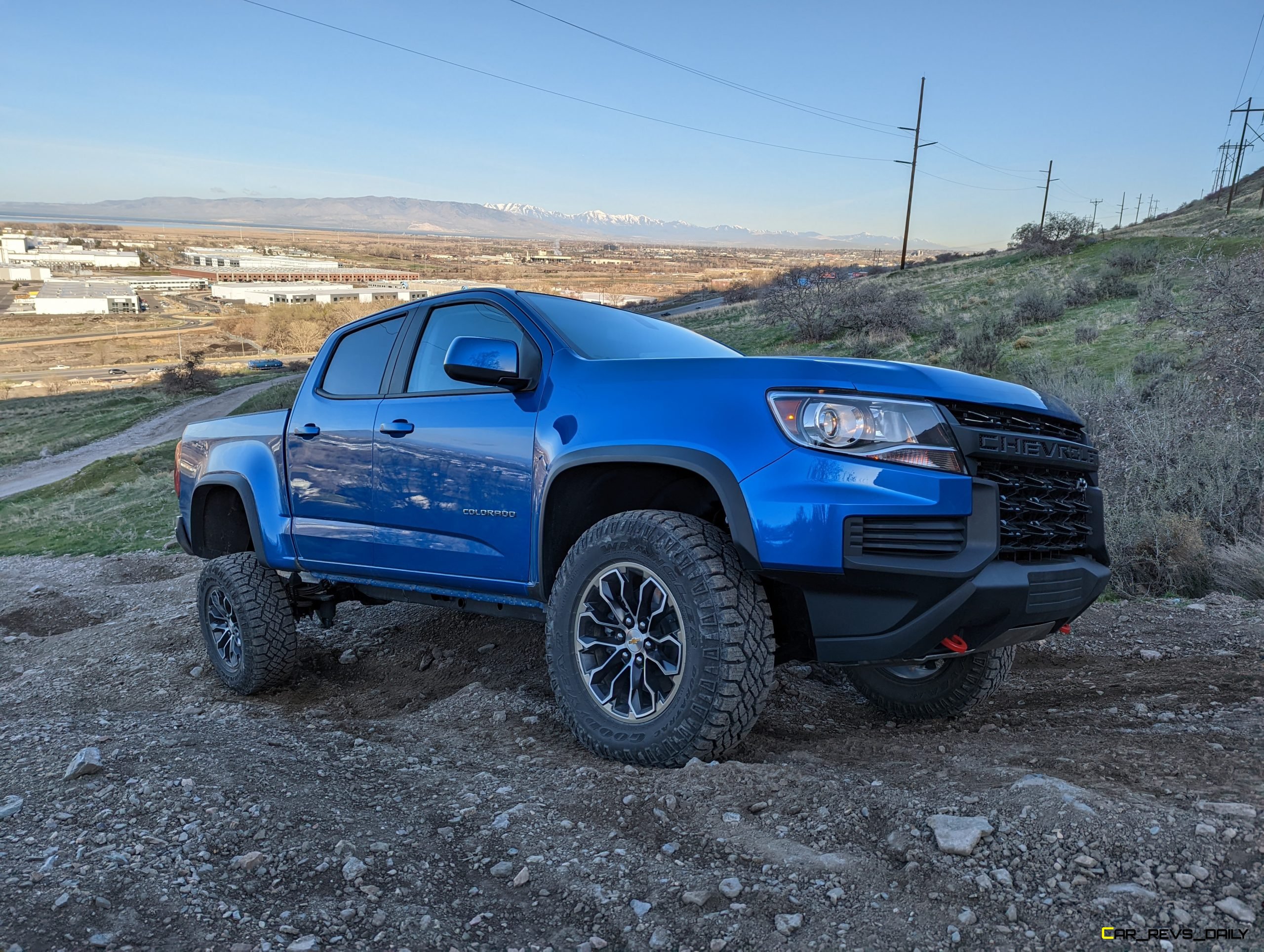
Matthew Barnes is an experienced towing expert. He works as a mechanical engineer and his day job involves testing a variety of vehicles while towing trailers of all types and sizes. Matt shares his knowledge by writing for automotive news outlets in the evenings. When he’s not working he can be found spending time in the great outdoors with his family. He enjoys camping, hiking, canyoneering, and backpacking. Whenever possible he spends time riding in or on any power sports vehicle he can find and claims he can drive anything with a motor, which probably isn’t true.
Matt lives in the Utah mountains and often posts cool off-roading videos to his Instagram and YouTube channel.

